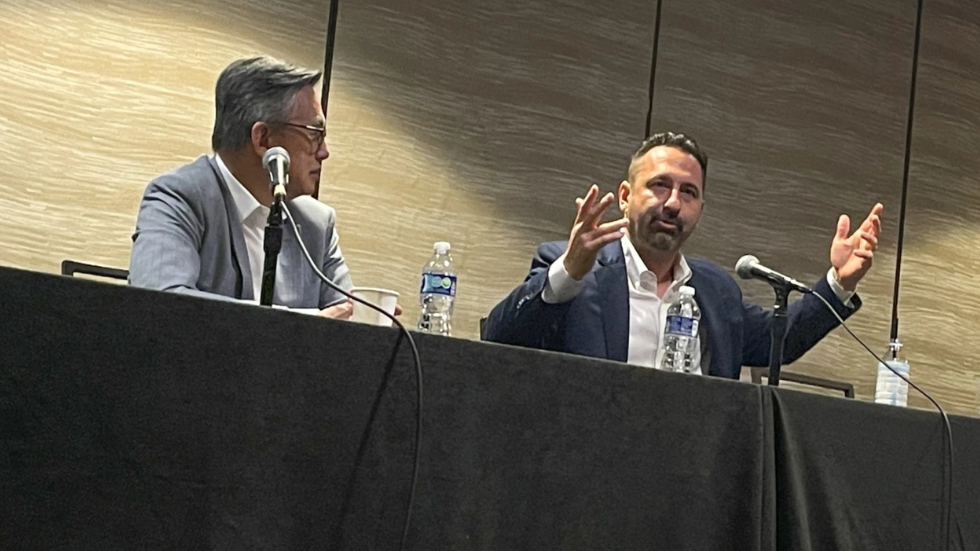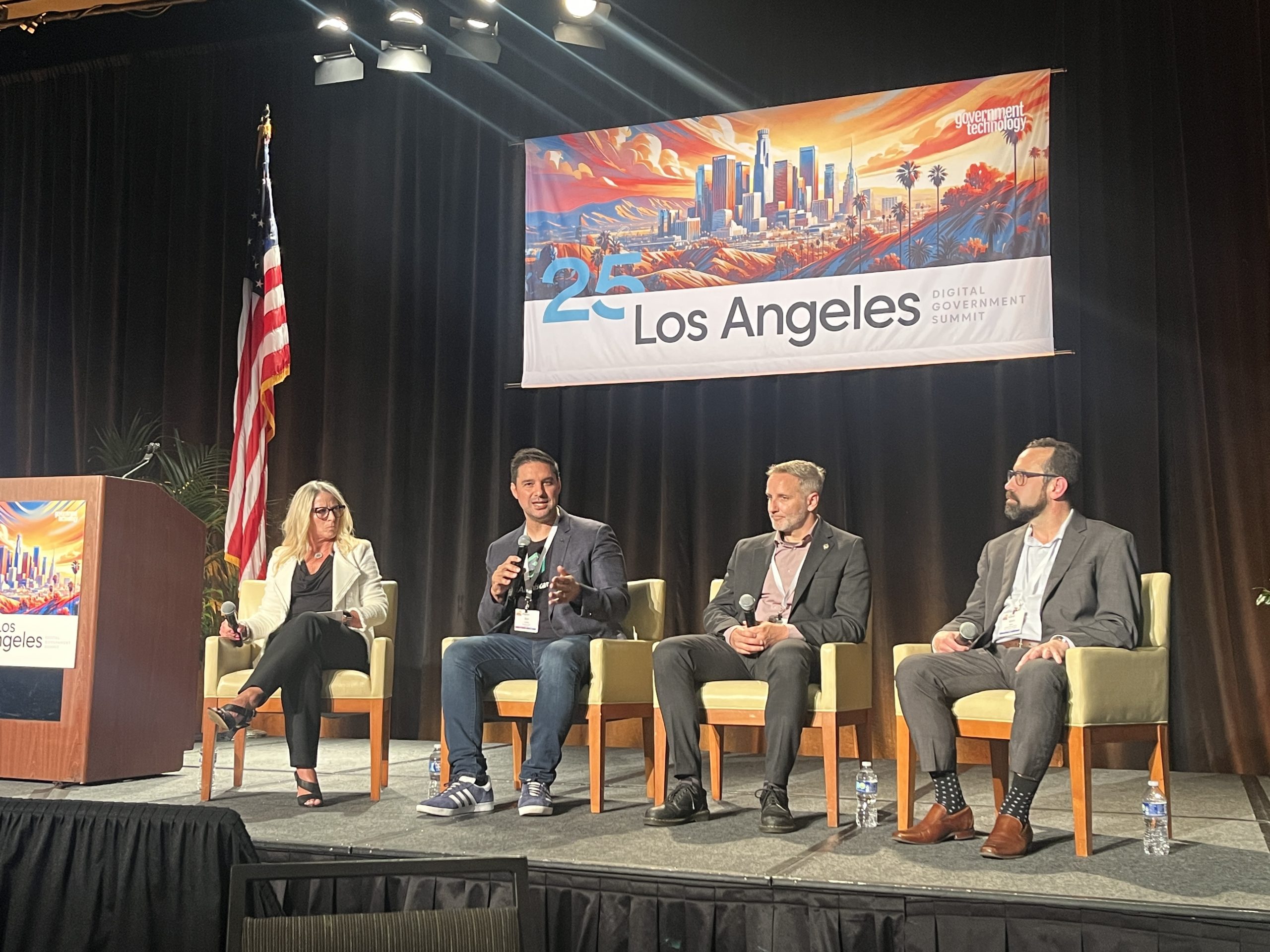- Los Angeles City and County CIOs are turning to AI to overcome budget cuts, staff shortages, and long permitting delays.
- Archistar eCheck, used by architects, city planners, and plan reviewers in Los Angeles and Malibu after the Eaton and Palisades fires, accelerates rebuilding by automatically checking designs against zoning and building code rules, reducing back-and-forth and speeding up permit approvals.
- City planners report early efficiency gains as AI automates tedious tasks and makes complex regulations digestible, helping fire survivors rebuild faster and strengthening community resilience after the 2025 fires.
When actor Tom Cruise performed his epic Mission Impossible–style stunts to make the Olympic flame handoff between Paris 2024 and Los Angeles 2028—rappelling down the Stade de France and then skydiving onto the Hollywood sign—excitement was at an all-time high. Los Angeles rode that wave for months, while developing big plans to prepare the city for the 2028 Olympics.
Then on January 7, 2025, everything changed. The Los Angeles fires ignited, including the Palisades and Eaton fires, and they weren’t contained for 24 days. More than 16,000 structures were destroyed and 37,000 acres burned.
Meanwhile, the city of LA faced a $1 billion budget crisis, which led to city-employee layoffs. This was the context that Ted Ross, CIO for the City of Los Angeles, provided at an industry briefing during the 2025 Los Angeles Digital Government Summit on August 12, 2025.
“It took a lot of oxygen out of the room,” he says. “How do we operate with such a traumatic loss? How do we maximize existing investments and empower a shrinking workforce with tools to give [employees] a fighting chance?”

Los Angeles County CIO Peter Loo (left) and Los Angeles City CIO Ted Ross discuss the current state of technology and the government workforce at the Los Angeles Digital Government Summit on August 12. Credit: Eyagon Eidam
Solution Adoption is Critical
Ross explained that LA’s expense budget is down 21%, which means that his team has to maximize the resources it has. “We can’t use 10% of a tool,” he says. “We need to maximize 70–80% of every solution.” Whereas some enterprise tech companies can afford to pilot software solutions and shut them down quickly if they don’t quickly meet their needs, cities need to be more methodical about onboarding tools and rolling out training programs to increase adoption.
According to Peter Loo, CIO for the County of Los Angeles, who joined Ross in the summit briefing, adopting new tools can be even more challenging for the county. “The county is a decentralized organization with 40 departments,” he says. “We had legacy systems that had to be replaced, and we had to provide training sessions to leverage the capabilities of the technology better. But it takes time to understand the issues. We don’t have one vendor or system because there’s no one perfect magic solution to solve problems.”
And in terms of seeking new technology to mitigate challenges, the CIOs can’t depend solely on one type of city or county employee—such as the younger innovators on their teams—to find solutions. “Even the person who is about to retire in four weeks plays a role,” Ross says.

Bits and Bytes panelists from left to right: moderator Stephanie Todd, Deputy CIO, County of Los Angeles; Archistar CEO Dr. Benjamin Coorey; Andrew Pennington, Director of Strategic Initiatives, Office of Mayor Karen Bass, City of Los Angeles; and Mitch Glaser, Assistant Administrator, Department of Regional Planning, County of Los Angeles. Credit: Kylee Gordon
Approved Building Permits, Faster
While there’s skepticism about artificial intelligence (AI) and how it will impact city and county governments, Ross and Loo are bullish on the future of technology. Both are removing blockers to make AI more accessible to their departments.
One example is their deployment of Archistar eCheck in LA to speed up the design and permitting process for architects and city planners, so homeowners can rebuild their homes and lives faster. “[eCheck] consumes all the ordinances and information to tell you, ‘Here are nine areas you should resolve before you submit your plans,’ so that when you submit it to the city, it has the fastest possible approval rating,” Ross says.
In a separate Digital Government Summit session called Bits and Bytes—Wildfire Recovery Innovation: eCheck LA Rebuild, city officials and planners joined Archistar.ai CEO Dr. Ben Coorey to discuss how their partnership began and how it’s going.
The AI-driven eCheck platform launched for beta testing in the City and County of Los Angeles on July 15, sponsored by Steadfast LA, LA Rises, Amazon, and Autodesk. The platform ingests publicly available data from the city and county to do building design checks and create standardized plans that the planning departments can review and approve quickly.
“We’re already seeing some of these efficiencies come through,” says Andrew Pennington, Director of Strategy Initiatives for the Office of Mayor Karen Bass in the City of Los Angeles. “Not everyone is taking advantage of [eCheck], so we do have that control to be able to say, ‘This is what happens if you’re using AI, and this is what happening if not.’ Not only is time a big component of it, but how much back and forth is happening between the architect or engineer or the homeowner and the department themselves?”

